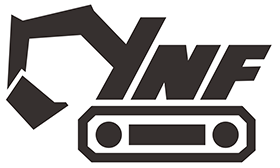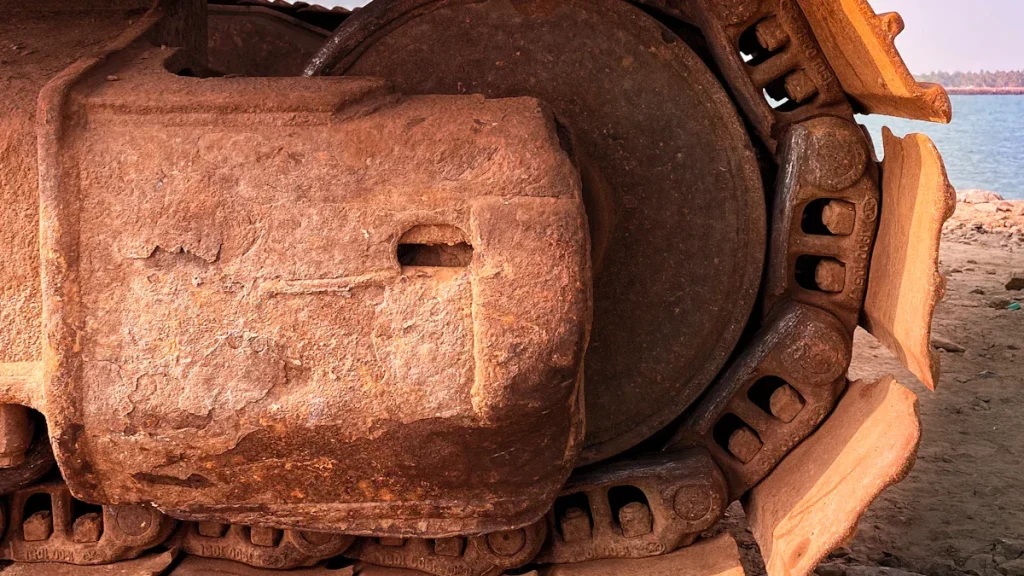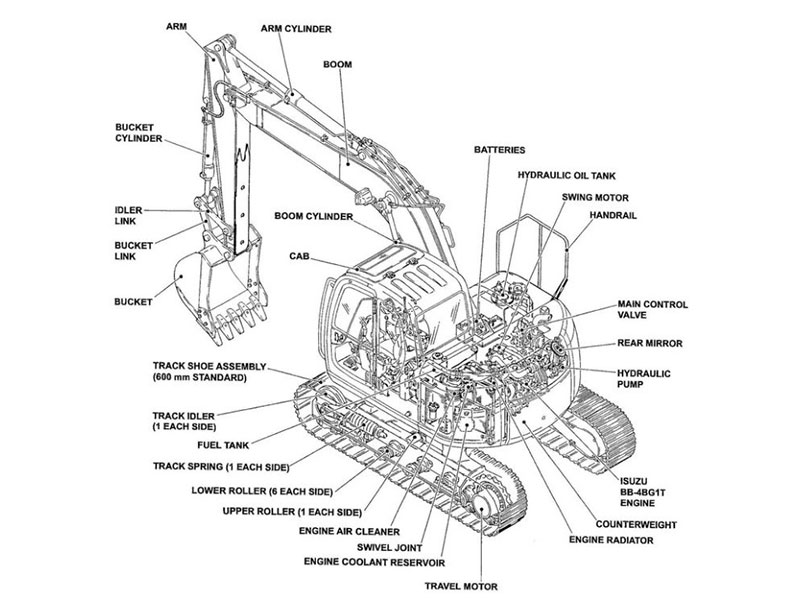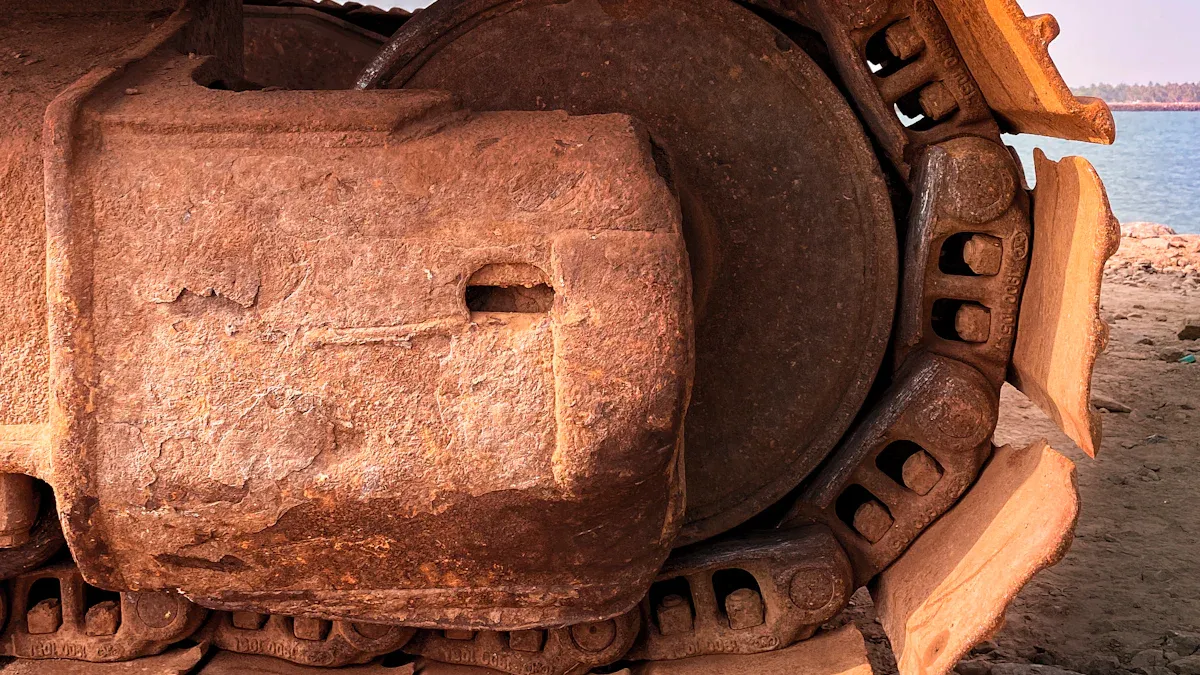
The Cat 320 excavator uses special parts to work well. Each part is important for smooth use and lasting strength. Learning about these parts helps you take care of the machine and fix problems fast. Whether you use or repair the excavator, knowing its main systems helps you work better and avoid delays.
Understanding how Cat 320 excavator parts work helps you make better choices during fixes and regular care.
Key Takeaways
Knowing how the Cat 320’s hydraulic system works is important. Check the pump, cylinders, and hoses often to avoid big repairs and keep it running well.
The CAT C4.4 ACERT engine gives power and saves fuel. Listen for odd noises and do regular maintenance to make it last longer.
Taking care of the undercarriage helps with balance and movement. Look at the tracks, rollers, and tension systems often to keep it working smoothly.
Picking the right bucket for your job makes work easier. Check the bucket teeth for damage to dig better and protect the hydraulic system.
The operator’s cab is made for comfort and safety. Check the controls, visibility tools, and safety parts often to stay safe while working.
Hydraulic System in Cat 320 Excavator Parts
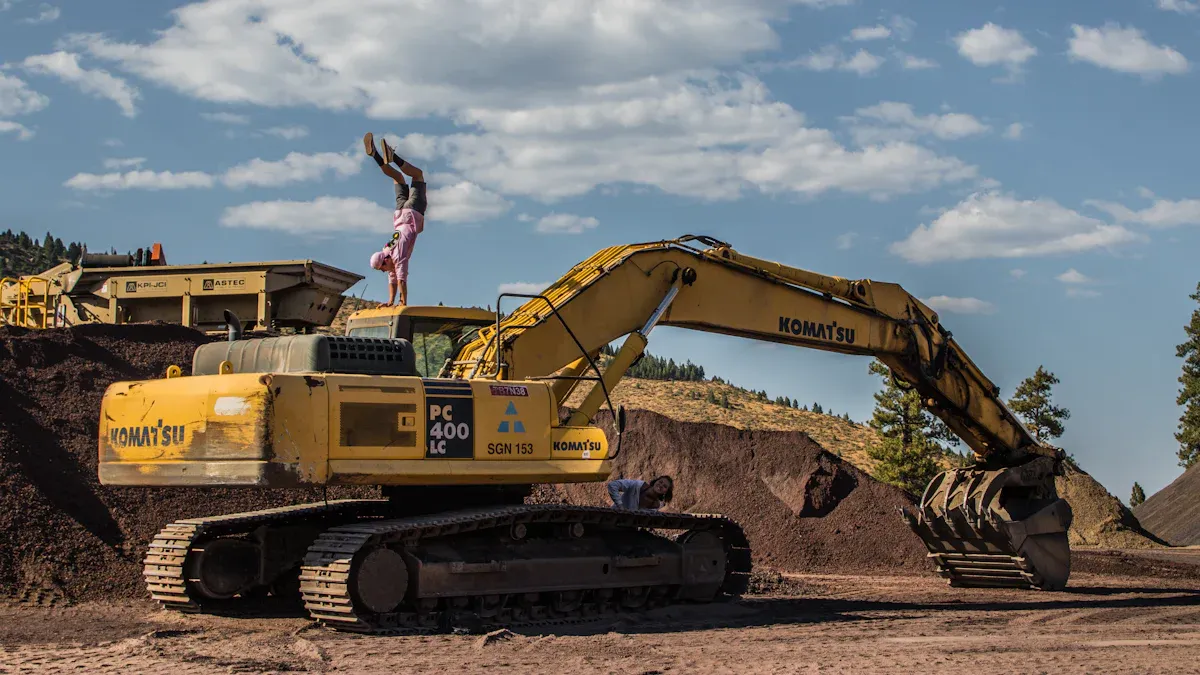
The hydraulic system is the main part of the Cat 320. It makes the machine move and work accurately. Knowing its parts helps you keep it running well and avoid big repair costs.
Hydraulic Pump
The hydraulic pump is the system’s most important part. It creates pressure to move hydraulic fluid through the machine. This fluid powers the boom, arm, and bucket for heavy tasks. The Cat 320’s pump can flow up to 442 liters (117 gallons) per minute. This high flow keeps the machine strong and smooth, even during tough jobs.
Check the pump often for leaks or wear. A good pump keeps the machine working well and prevents breakdowns.
Hydraulic Cylinders
Hydraulic cylinders turn fluid pressure into force. They move the boom, arm, and bucket. The Cat 320’s cylinders are very strong. The bucket can dig with 28,935 pounds of force, and the stick with 22,281 pounds of force.
Keep the cylinders oiled and check them often. Look for damage or leaks to ensure they work right. Healthy cylinders give the excavator its full digging power.
Hydraulic Hoses and Valves
Hoses and valves connect parts and guide the fluid. The hoses handle high pressure, up to 5,075 psi in the Cat 320. Valves control the fluid’s direction for accurate movements.
Check hoses for cracks, leaks, or wear. Broken hoses can cause fluid loss and poor performance. Also, make sure valves work smoothly to control the machine properly.
Performance Metrics
The Cat 320’s hydraulic system is very strong. Here are some key numbers:
Metric | Value |
|---|---|
Bucket Digging Force (ISO) | 28,935 lbf |
Stick Digging Force (ISO) | 22,281 lbf |
Maximum Flow Rate | 442 l/min (117 gal/min) |
Maximum Pressure (Equipment) | 5,075 psi |
Maximum Pressure (Travel) | 4,974 psi |
Maximum Pressure (Swing) | 3,625 psi |
Swing Speed | 11.6 r/min |
Maximum Swing Torque | 54,900 ft·lbf |
These numbers show how powerful the Cat 320’s hydraulic system is. Taking care of its parts keeps it reliable and makes it last longer.
Engine and Powertrain Components
CAT C4.4 ACERT Engine
The Cat 320 uses the CAT C4.4 ACERT engine for power. It gives up to 172 horsepower, making tough jobs easier. This engine is designed to save fuel and work well. It lowers costs and produces fewer emissions, helping the environment.
To keep it working well, regular checks are needed. Look for problems like strange sounds or weak power. Fixing these early can save money and make the engine last longer.
Cooling and Fuel Systems
The cooling and fuel systems are key to engine health. The cooling system stops overheating, and the fuel system gives energy. If these fail, the engine may lose power or stop working.
Common problems include:
Dirty Air Filter: Blocks air, making the engine work harder and use more fuel.
Faulty Injectors: Deliver fuel poorly, wasting fuel and lowering efficiency.
Change air filters and fix injectors often to save fuel.
The cooling system also needs care. Here’s a simple guide to common issues:
Cause | Problem It Causes | How to Fix It |
|---|---|---|
Clogged Radiator | Overheating due to poor cooling. | Clean or replace the radiator. |
Faulty Thermostat | Stops coolant flow, raising engine temperature. | Test and replace the thermostat if needed. |
Low Coolant Levels | Poor cooling, risking engine damage. | Add coolant and check for leaks. |
Fixing these problems quickly keeps the engine running its best.
Counterweight for Stability
The counterweight keeps the Cat 320 stable while working. It helps balance the machine when lifting heavy things. Without it, the excavator could tip over, which is dangerous.
The Cat 320’s counterweight is made to give balance and stay mobile. Check it often for damage or loose bolts. A secure counterweight keeps the machine safe and steady, even in tough jobs.
Knowing these engine and powertrain parts helps you care for your Cat 320. Good maintenance reduces downtime and keeps the machine working hard.
Undercarriage and Mobility
The undercarriage helps the Cat 320 stay stable and move. It lets the machine handle rough ground while staying balanced and strong. Knowing its parts helps you keep it working well and lasting longer.
Tracks and Track Rollers
Tracks and rollers help the excavator move. Tracks give grip, and rollers hold the machine’s weight. They also guide the tracks as the machine works. The Cat 320 has grease-lubricated tracks that are sealed to block dirt. This keeps them working longer. The rollers are sealed and use oil, lasting up to 1,000 hours before needing service.
The tracks have tough rubber to reduce wear and improve grip. Steel pads make them last longer, even with heavy use. Check tracks and rollers often to spot problems early and avoid big repair costs.
Feature | What It Does |
|---|---|
Grease Lubricated Tracks | Sealed to block dirt and last longer. |
Sealed and Oil-Lubricated Rollers | Last longer with less maintenance. |
Steel-on-Steel Contact | Strong steel pads for longer life. |
Hard Rubber Compound | Reduces wear and improves grip. |
Sprockets and Idlers
Sprockets and idlers keep the tracks moving right. Sprockets grab the track links to move them forward or back. Idlers keep the tracks tight and straight, stopping them from slipping.
The Cat 320’s sprockets and idlers are made to handle heavy loads and rough ground. Clean and check them often to keep them working well. Worn sprockets or misaligned tracks can cause uneven wear and lower performance.
Track Tensioning System
The track tensioning system keeps tracks tight enough to work well. It also stops them from wearing out too fast. The Cat 320 uses a grease-adjusted system, making it easy to set the right tension.
Tight tracks help the machine work better and avoid damage. Check the tension often and adjust it when needed. Tracks that are too tight can break parts, while loose tracks might fall off during use.
Feature | What It Does |
|---|---|
Track Guiding Guard | Keeps tracks straight while working. |
Track Frame Design | Sloped to stop mud and dirt from building up. |
Travel Motor Lines | Protected inside the frame from damage. |
By learning about the Cat 320’s undercarriage, you can keep it reliable. Regular care of these parts lowers downtime and makes the machine last longer.
Boom, Arm, and Bucket Assembly
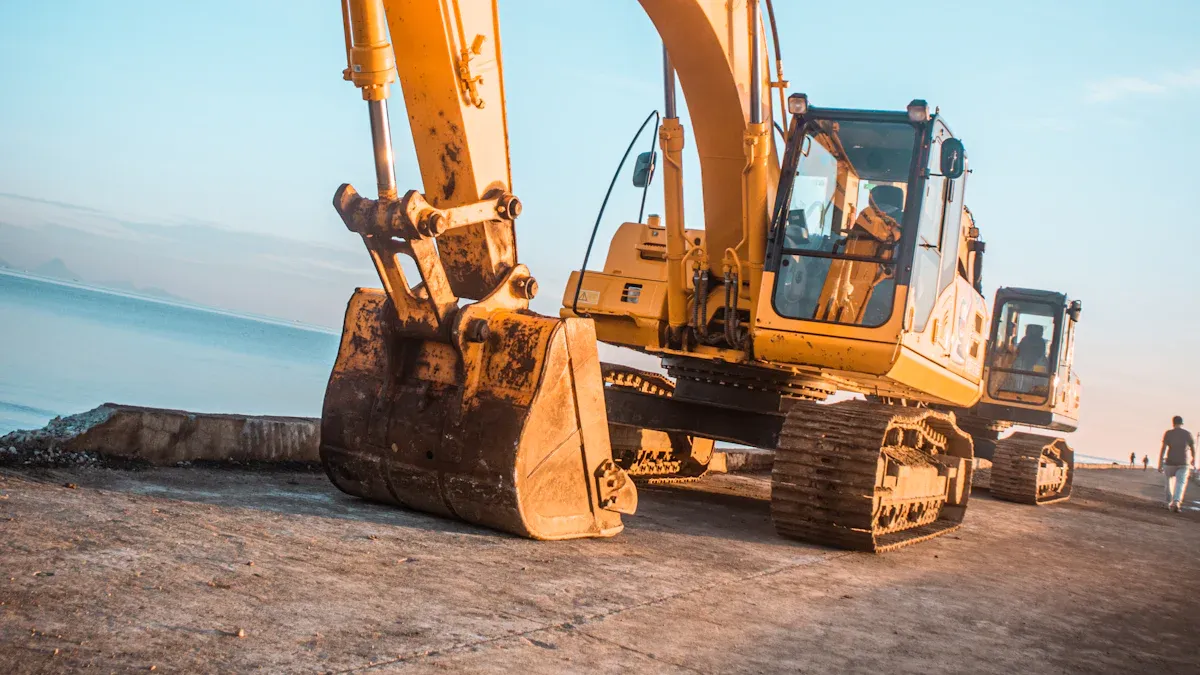
The boom, arm, and bucket are key parts of the Cat 320. They work together to dig, lift, and move materials. Knowing how they are built helps you pick the right setup for your tasks.
Boom and Arm Design
The boom lifts heavy loads, and the arm extends reach. Together, they control the bucket for digging, grading, and loading. The Cat 320’s boom and arm are made strong to handle tough jobs. They use high-strength steel and advanced welding to last longer. This design reduces wear and keeps them working well.
Check the boom and arm often for cracks or dents. Fixing small issues early prevents bigger problems and costly repairs.
Bucket Types and Attachments
The bucket is the most flexible tool on the Cat 320. Different types of buckets are made for specific jobs:
General Purpose Buckets: Best for digging soft materials like soil or sand.
Heavy-Duty Buckets: Built for hard tasks like moving rocks or rough debris.
Trenching Buckets: Narrow buckets for digging small, precise trenches.
Skeleton Buckets: Let small materials fall through while keeping larger pieces.
The construction industry often uses heavy-duty and trenching buckets for big projects. Picking the right bucket improves performance and saves time. Check your bucket often for worn teeth or edges. Replacing these parts keeps digging smooth and protects the hydraulic system.
Quick Coupler System
The quick coupler system makes switching tools fast and easy. You can change buckets or tools without much effort. This saves time and boosts productivity.
The Cat 320’s quick coupler locks tools securely in place. It also has a visual check to ensure safe attachment. Clean and oil the coupler often to avoid rust or damage. A well-kept coupler system helps you handle many tasks quickly and safely.
By learning about the boom, arm, and bucket, you can maintain them better. These parts are vital for the Cat 320’s performance, making it a dependable machine for your work.
Operator’s Cab Features
Control Panel and Joysticks
The Cat 320’s control panel and joysticks are easy to use. The panel has simple buttons and a touchscreen for quick adjustments. You can check the machine’s performance and change settings fast. The joysticks let you move the boom, arm, and bucket smoothly.
The design keeps your hands comfortable during long work hours. Joysticks respond well to your movements for better control. Clean them often to stop dirt from causing problems.
Comfort and Safety Features
The cab is built for comfort and safety. It has plenty of space to move around. Temperature controls keep you cool or warm in any weather. The seat adjusts to support your back and reduce tiredness.
Safety features include strong glass windows and a rollover protection system. These protect you from dangers and keep the cab stable in accidents. Emergency exits are placed for quick escapes if needed.
Check the seat and safety systems often. Replace worn parts to keep the cab safe and comfy.
Visibility Enhancements
Good visibility helps you use the Cat 320 safely. Large windows and thin frame supports give a clear view. LED lights help you see better when working at night.
A rearview camera shows blind spots, lowering accident risks. Clean the windows and camera lenses to keep your view clear.
Tip: Use the sunshade to block glare on sunny days. This helps you focus and work more accurately.
Knowing Cat 320 excavator parts helps you use it better. It also prevents expensive repairs and delays. Regular care and real Cat parts make it last longer. For instance, the Vehicle Health Management system gives helpful alerts. Strong cooling fans also lower wear and tear. These features can cut maintenance costs by 20% over 12,000 hours.
Feature | What It Does |
|---|---|
Genuine Cat oils and filters | Doubles time between maintenance to 1,000 hours |
New hydraulic oil filter | Lasts up to 3,000 hours before replacement |
High-performance electric cooling fans | Need less radiator upkeep |
Learning about these parts keeps the machine safe and productive.
FAQ
1. How often should you check the hydraulic system for leaks?
Check the hydraulic system every week. Look for leaks near hoses, valves, and cylinders. Finding leaks early saves money and keeps the machine working well.
2. What is the best way to maintain the Cat 320’s tracks?
Clean the tracks daily to remove dirt and mud. Inspect them weekly for damage or wear. Adjust track tension often with the grease system to avoid fast wear.
3. Can you use non-Cat parts for replacements?
Non-Cat parts might not work as well and could void warranties. Genuine Cat parts fit better and last longer. Always pick original parts for the best results.
4. How do you know when to replace the bucket teeth?
Replace bucket teeth when they look dull or worn out. Worn teeth make digging harder and stress the hydraulic system. Check them after every 50 hours of use.
5. What safety features does the operator’s cab include?
The cab has rollover protection, emergency exits, and strong glass. These features keep you safe during accidents. Inspect them often to make sure they work properly.
Tip: Follow the Cat 320 manual’s maintenance schedule to stay safe and keep the machine running well.
